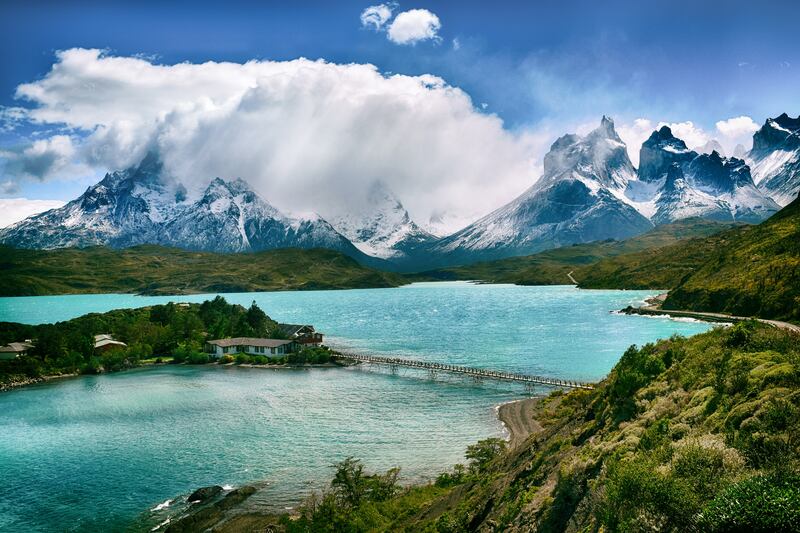Hiking is a great way to explore nature, stay active, and disconnect from technology. With so many hiking trails around the world, it can be overwhelming to choose where to go next. In this blog post, we will give you some recommendations for must-visit destinations, safety tips for your hike, conservation news from around the world, volunteer opportunities, and essential equipment for your next hike.
Top 5 Must-Visit Destinations
1. The Appalachian Trail – This iconic trail spans over 2,000 miles through 14 states in the eastern United States. It offers stunning views of mountains, valleys, and waterfalls.
2. Mount Everest Base Camp Trek – Located in Nepal, this trek takes you on a journey through Sherpa villages, glaciers, and high altitude passes. The breathtaking scenery makes it worth the challenge.
3. Camino de Santiago – Also known as the Way of St. James, this pilgrimage trail spans across Spain and France. It attracts thousands of hikers each year who want to experience its rich history and culture.
4. Milford Track – Situated in New Zealand’s Fiordland National Park, this track boasts stunning landscapes including towering peaks, pristine lakes, and ancient rainforests.
5. Pacific Crest Trail – Spanning over 2,600 miles along the west coast of North America, this trail takes hikers through California, Oregon, and Washington state. It offers diverse terrain ranging from deserts to snow-capped mountain ranges.
Hiking Trail Safety Tips
Safety should always be a top priority when hiking. Here are some tips to help keep you safe on the trails:
1. Plan ahead – Research the trail conditions, weather forecast, and bring appropriate gear.
2. Bring enough water – Dehydration can lead to fatigue and other health issues. Make sure to bring plenty of water and refill at streams or springs if possible.
3. Let someone know your route – Share your planned route with a friend or family member before setting out. Check in regularly throughout your trip to let them know you’re okay.
4. Know your limits – Don’t push yourself too hard, especially if you’re new to hiking. Start small and work your way up gradually.
5. Be aware of wildlife – Familiarize yourself with potential hazards such as venomous snakes or aggressive animals. Keep a safe distance and respect their habitat.
6. First Aid Kit – Carry a basic first aid kit that includes bandages, antiseptic wipes, insect repellent, sunscreen, and any necessary medications.
Conservation News from Around the World
Preserving our natural resources is crucial for future generations. Here are some recent updates on efforts to protect nature’s beauty:
1. Amazon Rainforest Fires – The fires burning in the Amazon have gained global attention due to their impact on climate change and indigenous communities. Governments and organizations are working together to combat the blaze and raise awareness about sustainable practices.
2. Great Barrier Reef Conservation – Efforts to preserve Australia’s Great Barrier Reef include reducing pollution and improving water quality. Scientists are also researching ways to improve coral resilience to rising ocean temperatures.
3. African Elephant Poaching – Poaching remains a significant threat to elephants in Africa. Organizations like the International Union for Conservation of Nature (IUCN) are working towards ending poaching by increasing law enforcement and raising public awareness.
4. Plastic Pollution Solutions – Many countries are implementing policies to reduce single-use plastics and promote recycling. Companies are also exploring alternative materials and packaging solutions to reduce waste.
5. Climate Change Mitigation – Global leaders met at the UN Climate Summit in November to discuss strategies for mitigating climate change. Countries pledged to increase their carbon reduction targets and investment in renewable energy sources.
Volunteer Opportunities
There are numerous ways to get involved in preserving hiking trails. Here are some volunteer opportunities to consider:
1. Trail Maintenance – Many parks and recreational areas rely on volunteers to maintain trails and clean up litter. Contact local park offices to find out how you can help.
2. Citizen Science Programs – These programs allow individuals to collect data and contribute to scientific studies while enjoying the outdoors. Projects may involve monitoring plant and animal populations, tracking weather patterns, or testing water quality.
3. Tree Planting – Volunteering to plant trees helps restore habitats and prevent erosion. Look into community tree-planting events or contact local environmental organizations to learn more.
4. Beach Cleanups – Joining beach cleanup events not only helps remove trash but also raises awareness about marine pollution. Consider organizing your own event or joining an existing one.
5. Wildlife Rescue – If you have experience handling animals, consider volunteering at a wildlife rescue center. You could assist with rehabilitation, feeding, and release procedures.
Gear Guide
Essential equipment for your next hike includes:
1. Proper Footwear – Choose shoes or boots that offer good support and grip. Consider factors such as weight, durability, and breathability depending on the type of terrain you plan to tackle.
2. Water Bottles/Hydration System – Staying hydrated is critical when hiking. Bring enough water bottles or use a hydration system like a bladder or water filter.
3. Navigation Tools – A map, compass, or GPS device is essential for navigating unfamiliar territory. Consider bringing a backup option in case of malfunction.
4. Lighting – Headlamps or flashlights are useful for illuminating dark paths or finding your way back to camp at night.
5. Protection – Sunscreen, insect repellent, and a hat or buff can provide protection against UV rays, bugs, and wind.
6. Food and Snacks – Pack lightweight, nutritious foods and snacks to keep you energized during long hikes. Consider items like trail mix, granola bars, or dried fruits.
7. Emergency Supplies – Carry a first aid kit, whistle, emergency blanket, and multi-tool for unexpected situations.





